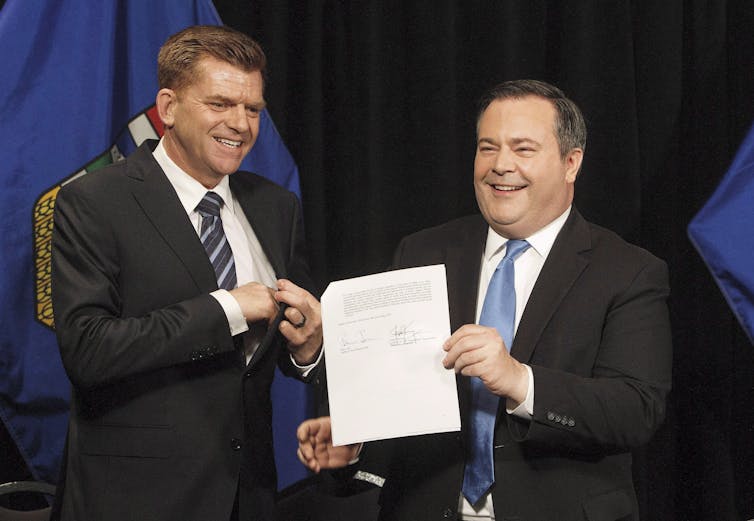CBC/Radio-Canada -
Finance Minister Travis Toews has entered the campaign for leadership of Alberta's governing United Conservative Party.

© Juris Graney/CBC
Alberta Finance Minister Travis Toews speaks to the media prior to tabling Budget 2020 on February 27, 2020.
Toews is the first candidate to officially join the race as the party prepares to replace outgoing Premier Jason Kenney.
Kenney plans to stay on in the top job until a permanent leader is chosen.
Toews, who had been rumoured as a contender, officially registered for the campaign on May 30, according to the Elections Alberta website.
Toews, the MLA for Grande Prairie-Wapiti, was first elected in April 2019 and was appointed finance minister.
Last week he declined to confirm or deny rumours about his pending campaign, telling reporters he wanted to focus on the business of the legislature.
If successful, he would become party leader and Alberta's new premier.
While no other candidates have officially registered with Elections Alberta, he likely won't be alone on the summer campaign trail.
Several candidates are already jostling to replace Kenney who announced his resignation earlier this month after earning 51.4 per cent in a party leadership review.
Former Opposition Wildrose Party leader and media personality Danielle Smith has said she'll be running in the leadership race, as has another former Wildrose and Opposition leader, Fort McMurray-Lac La Biche MLA Brian Jean.
Other ministers contemplating a run include Children's Services Minister Rebecca Schulz and Transportation Minister Rajan Sawhney.
A leadership Election Committee was appointed last week by the UCP.
The committee is responsible under UCP bylaws, for setting the rules and procedures for the race, such as timelines, entrance requirements and the format of the ballot.
The party is keen to find a replacement for Kenney before the fall sitting of the legislature begins on October 31.
It's also the last summer before the next scheduled provincial election date on or before May 29, 2023.
Toews is the first candidate to officially join the race as the party prepares to replace outgoing Premier Jason Kenney.
Kenney plans to stay on in the top job until a permanent leader is chosen.
Toews, who had been rumoured as a contender, officially registered for the campaign on May 30, according to the Elections Alberta website.
Toews, the MLA for Grande Prairie-Wapiti, was first elected in April 2019 and was appointed finance minister.
Last week he declined to confirm or deny rumours about his pending campaign, telling reporters he wanted to focus on the business of the legislature.
If successful, he would become party leader and Alberta's new premier.
While no other candidates have officially registered with Elections Alberta, he likely won't be alone on the summer campaign trail.
Several candidates are already jostling to replace Kenney who announced his resignation earlier this month after earning 51.4 per cent in a party leadership review.
Former Opposition Wildrose Party leader and media personality Danielle Smith has said she'll be running in the leadership race, as has another former Wildrose and Opposition leader, Fort McMurray-Lac La Biche MLA Brian Jean.
Other ministers contemplating a run include Children's Services Minister Rebecca Schulz and Transportation Minister Rajan Sawhney.
A leadership Election Committee was appointed last week by the UCP.
The committee is responsible under UCP bylaws, for setting the rules and procedures for the race, such as timelines, entrance requirements and the format of the ballot.
The party is keen to find a replacement for Kenney before the fall sitting of the legislature begins on October 31.
It's also the last summer before the next scheduled provincial election date on or before May 29, 2023.





















